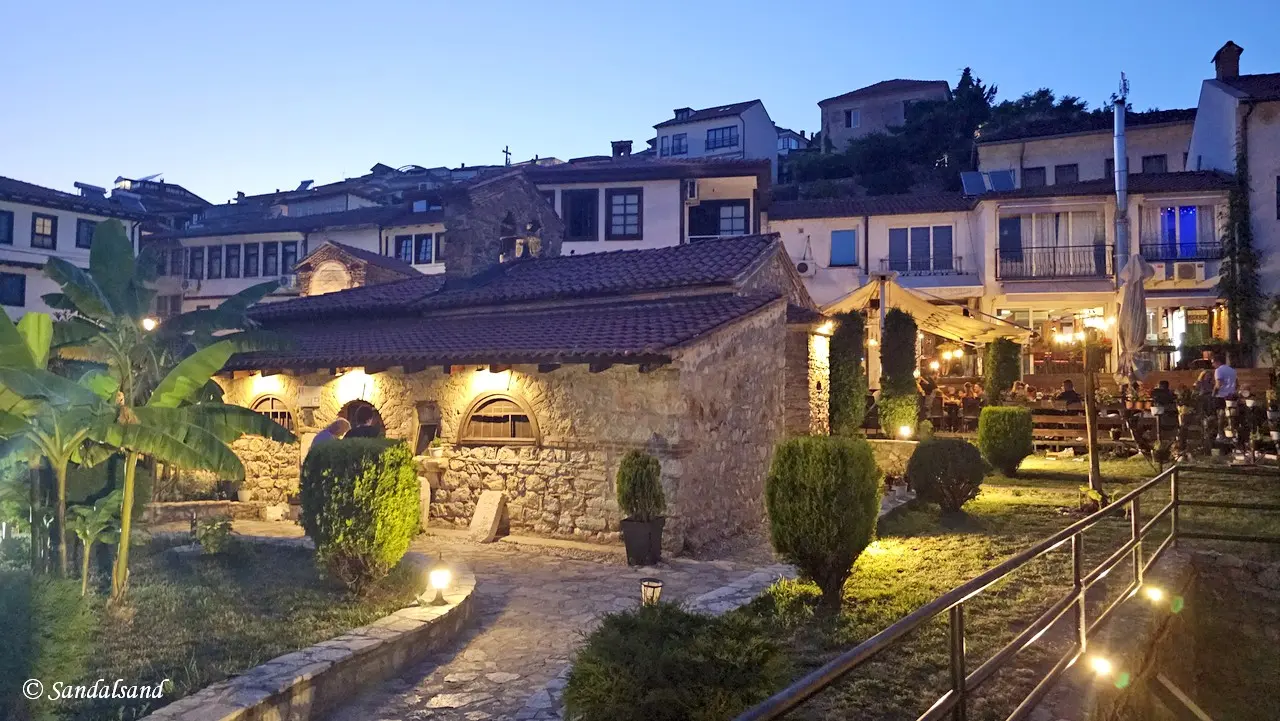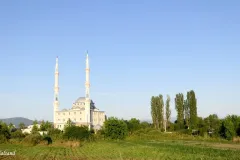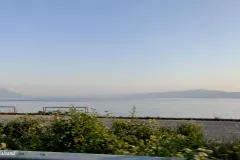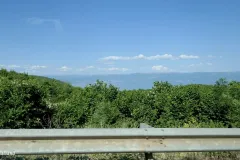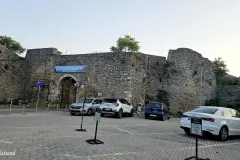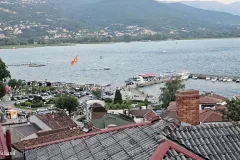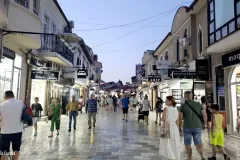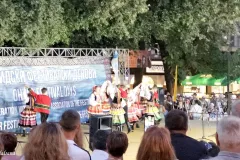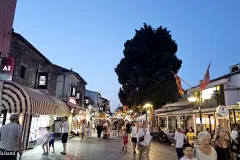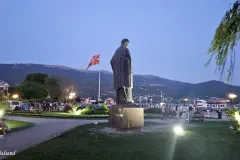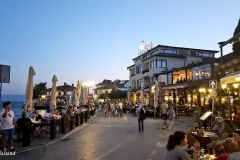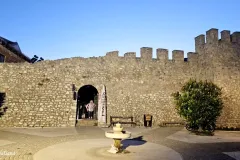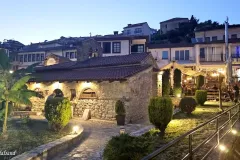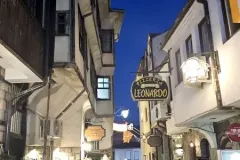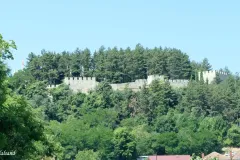In the Ohrid region we find Europe’s oldest lake, medieval churches, and mountain landscapes united in a harmony of nature and culture.
The UNESCO World Heritage List includes over a thousand properties. They have outstanding universal value and are all part of the world’s cultural and natural heritage.
Official facts
- Official title: Natural and Cultural Heritage of the Ohrid region
- Countries: Albania, North Macedonia
- Date of Inscription: 1979. Significant modifications to the boundaries in 1980 and 2019, and minor modifications in 2009
- Category: Mixed cultural and natural
UNESCO’s World Heritage Centre’s short description of site no. 99:
A superlative natural phenomenon, Lake Ohrid provides a refuge for numerous endemic species of freshwater fauna and flora dating from the Tertiary period. Situated on the shores of the lake, the town of Ohrid is one of the oldest human settlements in Europe. Built mainly between the 7th and 19th centuries, it has the oldest Slav monastery (St Pantelejmon) and more than 800 Byzantine-style icons dating from the 11th to the end of the 14th century. In the shallow waters near the shores of the lake, three sites testify to the presence of prehistoric pile dwellings, and the small Lin Peninsula is the site of the remains of an Early Christian church founded in the middle of the 6th century.
Know more about the significance of Ohrid
A lake of timeless beauty
Lake Ohrid, shared between North Macedonia and Albania, is one of Europe’s oldest and deepest lakes. Surrounded by mountains, it has existed for more than three million years and shelters hundreds of endemic species. Its crystal-clear waters and serene setting give the region an almost mythical atmosphere.
Where nature meets ancient civilisation
Human settlement around the lake dates back to prehistoric times. The town of Ohrid, often called the “Jerusalem of the Balkans,” flourished as a major religious and cultural centre during the Byzantine period. Its medieval churches, monasteries, and frescoes stand as masterpieces of Orthodox art. On the Albanian side, the village of Lin and nearby archaeological remains add further depth to the site’s long history.
A living heritage
UNESCO inscribed the Ohrid Region in 1979 for its natural and cultural value, later extending it to include the Albanian shore. Today, the area remains a living landscape where traditional fishing, religious festivals, and historic architecture coexist with the beauty of the lake. It is a rare place where nature and humanity continue to reflect one another in perfect balance.
Today, one will really have to work hard to visit the Albanian side of the lake. There is a road running near it, there are places to visit, and to stay. Nonetheless, this is not av very developed place – even when it comes to discovering the habitats of the various forms of species UNESCO wants to take care of.
A discreet sigh
For the casual visitor, in a car on the main roads, there are no signposts showing the UNESCO listing. There are no places to stop on main road on the Albanian side, nor the North Macedonian side of the lake. For this reason, I have only a very pictures to show from the countryside near Lake Ohrid.
To my, and Albania’s excuse, I did not drive extremely close to the lake. Instead, I spent two hours at the E852 border crossing between the two countries this afternoon. It was boring, to say the least.
A visit to the town of Ohrid
In 2025, I was on a Balkan road trip and managed to stay one night in the town of Ohrid. I arrived here from Albania via the border crossing on the northern side of the lake. From Ohrid I continued north to the capital city of Skopje.
I had rented an apartment inside the city walls, in an area off-limits to cars. That is, cars from non-residents. Fortunately my landlady had a spot available to park, in a very narrow street on the hillside above the city centre.
Anyway, Ohrid town has the appearance of a southern European resort town. There are numerous boats taking tourists out for a cruise, there are plentiful of restaurants and there was a folk musical festival in the centre of the town. The streets were crowded with people from, I guess, all over the Balkans. And the town is very charming.
I tried to seek out places of historical significance, and found some, but not all. Wildlife? Not at all. In any case, I consider my time here a bona fide visit to this heritage site.
These images are from the town of Ohrid in North Macedonia.
Read more
Find more articles from Albania and North Macedonia on Sandalsand.

